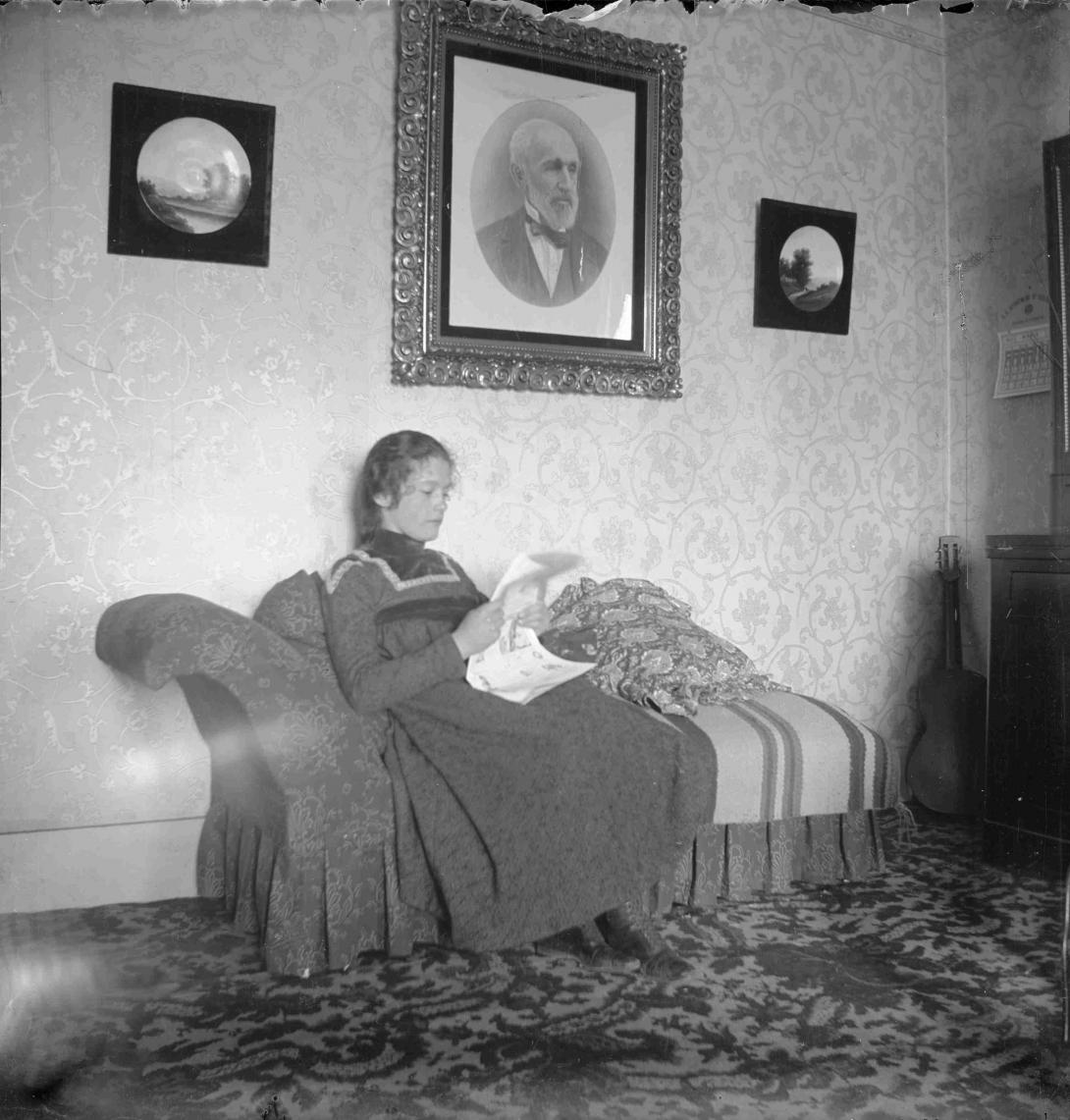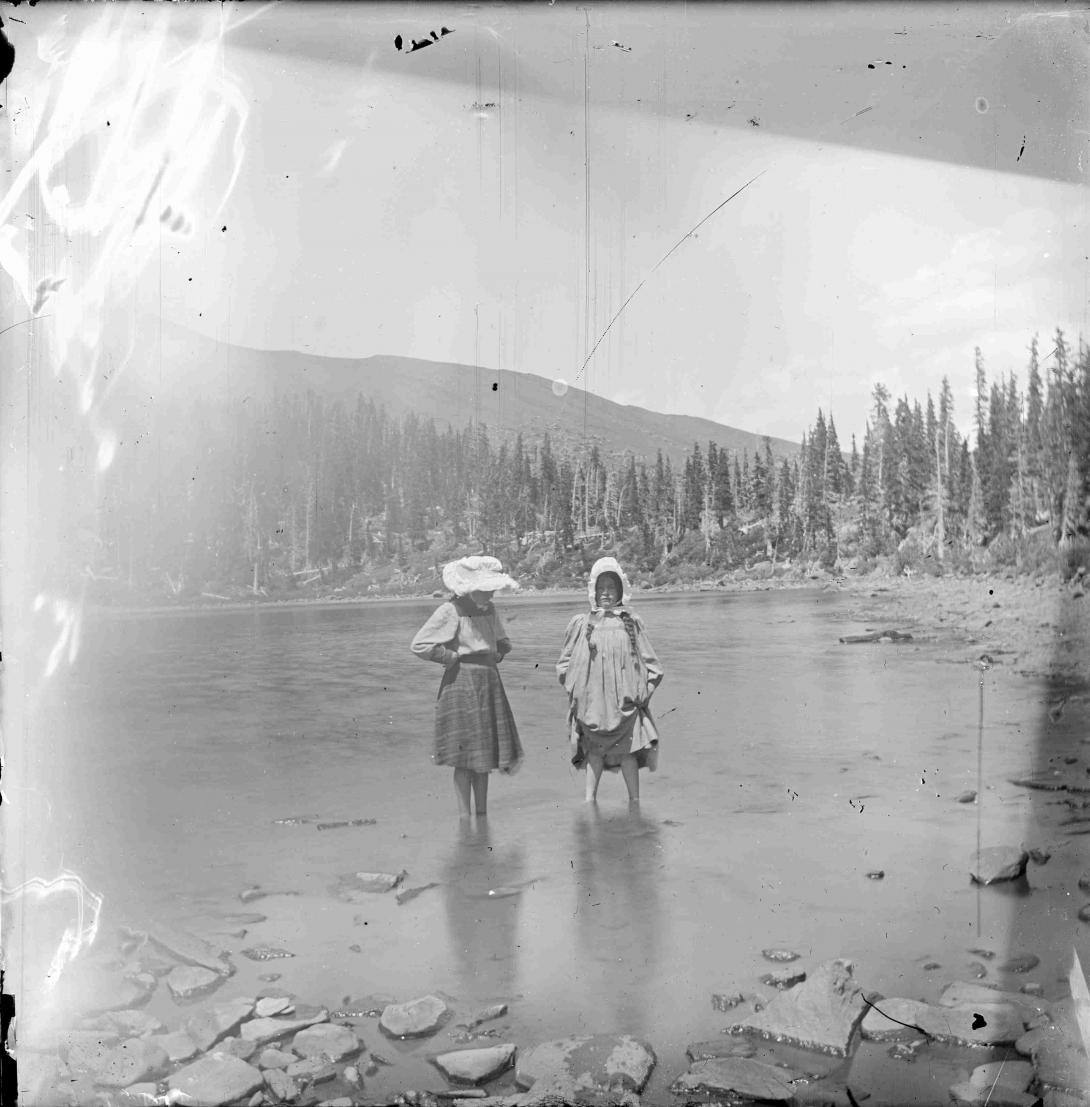Anna and Eugenia Kennicott
Full Article
Anna (1887–1963) and Eugenia Kennicott (1883–1934) grew up on a Colorado farm around the turn of the twentieth century and recorded their day-to-day lives in diaries and in rare photographic plates. Today, their chronicles of women’s experiences on a turn-of-the-century farm in the American west offer critical insight to the period, and Anna’s diary enjoyed relative success after being published in 1993.
Moving to Colorado
Seeking relief from his tuberculosis, Frank Kennicott moved from Half Day, Illinois, to the fairly uninhabited Wet Mountain Valley of Colorado Territory in 1869. Under the Homestead Act, he preempted 160 acres five miles north of Westcliffe and some twenty-five miles southwest of Cañon City. There, he built a two-story, five-room log house, and built a single-story addition the following year. On the picturesque ranch at the eastern foot of the Sangre de Cristo Range, Kennicott entered the cattle and hay businesses. Two years later, he journeyed back to his old home and married his sister’s piano teacher, Mary Elizabeth Thorp. Together, they traveled westward to the log house, and in 1872 their daughter Mary Thorp Kennicott was born. The child was said to have been the first non–Native American child born in the Wet Mountain Valley. Three days later, the mother Mary died of “childbed fever.” The infant, forever known as “Thorpie,” was returned to Picton, Ontario, where she lived with her maternal grandmother.
Meanwhile, in Cleveland, Ohio, a trio of Smith sisters—Emily, Helen, and Mary Smith—grew ever more familiar with the Kennicott family. Emily and Helen married Frank Kennicott’s brothers. Mary Smith vowed that she would never wed a Kennicott, but when Frank Kennicott proposed, Mary accepted and they went off to Colorado together, moving into the house that Frank had built years before near Westcliffe. Frank and Mary had two daughters: Eugenia Ransom Kennicott (b. January 19, 1883) and Anna Townsend Kennicott (b. September 14, 1887). Frank had graduated from a business college in Chicago, and now prospered through hard work and his knowledge of agriculture. The family enjoyed a lifestyle of advantages atypical of other frontier families. Frank died of cancer in 1914. Frank’s death prompted Mary Azuba to lease the Westcliffe house and move into a larger house Frank had built in Cañon City. Mary Azuba died in 1939 in an automobile accident.
The Kennicott Sisters
As a child, Eugenia contracted “tuberculosis of the spine,” perhaps from drinking contaminated milk. The condition resulted in what was known as a “humped back.” Eugenia, also known as “Gene” or “G,” could not romp and play like her sister or children from neighboring ranches, and so her father—the family ranch now prospering—bought her a camera, glass negative plates, and darkroom equipment. Eugenia promptly set about making photographs of daily activities around the farm, and of visitors from nearby ranchers, thus preserving images of the life eluding her. Each of the Kennicott sisters kept a diary. Anna’s diary survived to the present. In it, she offered observations—albeit brief ones—of the daily activities of a mountain frontier farm girl at the turn of the century: the idleness and boredom; the long hours filled by puttering about the house with “Mama,” or by the embroidering of one doily after another; the pet guinea pig and rabbits; the piano lessons (certainly not available to families of lesser means); the games of whist and cribbage; the long winter Sunday afternoons studying the Bible; and the excitement of going off by train to high school in Cañon City.
Anna graduated from high school in 1904 and proceeded to Stanford University. She specialized in classical languages and chemistry and graduated in August 1909. Schoolmate Edwin Rogers admired her in class, and when the 1906 San Francisco earthquake damaged her dormitory and other Stanford buildings, he assisted in getting her trunk to the train station so she could return to Westcliffe. They married on the ranch in 1912, and the couple eventually had four children.
Diaries, Plates, and Life in Colorado
In addition to Anna’s 1899 diary, the Kennicott family treasured and preserved fifty-seven four-by-four-inch glass negatives from the camera of Eugenia Kennicott. Eugenia suffered from lifelong depression and pain. Until her death, she resided in Cañon City and Westcliffe with her mother, Mary Azuba, frequently entering a tuberculosis sanitarium in Colorado Springs. Eugenia read extensively and continued playing piano. She wove baskets and did other crafts, maintained correspondence with many cousins, and labored on her dolls and dollhouse. She fashioned her own dolls’ clothing, turning mouse fur into dolls’ hats and even converting a squirrel skin into a dollhouse rug. Although her sister was entirely able-bodied, had graduated from a prestigious university, was married and had a family, traveled, and enjoyed a most comfortable life, family members in the present recall never hearing an expression of envy by Eugenia, and never an utterance of conflict in either direction. This might testify to Eugenia’s great strength of character. Indeed, the girls were bonded by a deep love for their half-sister Thorpie, and perhaps shared an ongoing consternation over the difficulties caused by their domineering mother, Mary Azuba. Moreover, the family, and Frank in particular, always made certain that gifts, time, and love were amply bestowed upon the luckless Eugenia.
Legacy
Eugenia’s visiting nieces were never permitted to kiss their “Aunt Gene” because of her tuberculosis, and thus she was forced to endure a life of limited affection. In 1934 she returned from Cañon City to the Westcliffe Ranch, and there she died. In limited discussion of an incredibly taboo topic—suicide was considered a mortal sin to the religiously inclined Kennicotts—her family always suspected that Eugenia hastened her death through overmedicating with the various opiate medicines provided by her doctors.
After Anna graduated from Stanford, she taught school in California and in Cañon City. Upon her marriage, she resided throughout the West and in Hawaii with her husband and four children. Later, the family returned to Colorado and the Westcliffe Ranch, and it was there in her elder years that Anna became afflicted with confusion. At one time, Anna’s daughter caught her mother ripping pages from Eugenia’s diary and burning them in the cookstove. In later times, Anna’s condition would have been attributed to the onset of Alzheimer’s disease. Anna died in Cañon City in 1963.
In 1993 Gertrude Schooley, one of Anna Kennicott’s three daughters, combined her mother’s diary entries with Eugenia’s photographs and privately published them under the title Learn to Labor and to Wait: 1899 Diary of Anna Kennicott, Age 11, with Photos by Eugenia Kennicott, Age 15. In 1998, Eugenia’s negatives were donated to the Colorado Historical Society (now History Colorado). The Kennicott Ranch, amounting to some 3,000 acres, is listed on the National and Colorado registers of historic places. Additionally, it has been designated by the Colorado Historical Society as a Colorado Centennial Farm, denoting its ownership by one family for at least a century.
Adapted from Clark Secrest, ed., “‘Learn to Labor and Wait’: The 1899 Diary of Anna Kennicott with the Glass Plate Photography of Eugenia Kennicott,” Colorado Heritage Magazine 19, no. 3 (1999).




